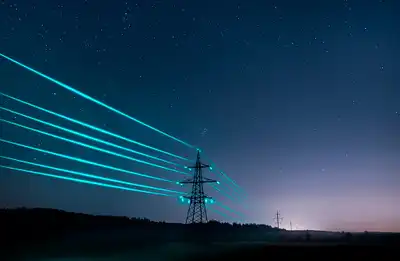How Is Electricity Generated In South Africa?

South Africa has Africa’s third largest economy. Coal accounts for the vast majority of its electricity production. By 2050, the country hopes to have decommissioned 34 GW of coal-fired power capacity. It also intends to construct at least 20 GW of renewable energy capacity by 2030.
Primary Source of Electricity
Coal-fired power stations generate approximately 85 percent of South Africa’s electricity, or 42,000 MW. Notwithstanding the environmental issues, coal will continue to generate the significant proportion of South Africa’s power for the next decade, though renewables will rapidly increase their share. South Africa is the 14th-largest emitter of greenhouse gases in the world and is working to improve its environmental performance.
How the Electricity Is Generated
South Africa’s vertical integration state-owned power company Eskom, generates approximately 95 percent of the electricity consumed in the country, as well as a significant portion of the electricity generated on the African continent. Counties like, Botswana, Lesotho, Mozambique, Namibia, eSwatini, and Zimbabwe are all customers. South Africa has one of the highest electrification rates on the continent, with rural electrification at around 66 percent and urban electrification at around 93 percent.
What is Renewable Energy in South Africa?
Many people equate renewable energy with solar and wind energy, but it includes all new technology that do not use non-replaceable fossil fuels. Coal, oil, gas, and minerals are all examples of fossils (for example the uranium used in nuclear energy).
Hydropower plants, which generate electricity from the downward flow of water, are a renewable energy source. This is the primary source of electricity in water-rich countries such as Norway, but it is only a limited option in drier climates. When water must be stored in dams during a drought, no electricity can be generated. Because South Africa is prone to droughts, a significant increase in local hydropower generation (currently at 3% of the total) is impractical.
Renewable energy technologies, such as geothermal and tidal power generation, are only available in a few areas of South Africa. Wind and solar are the only options left. These sources currently account for approximately 8% of South Africa’s energy mix.
Will Solar Energy be Feasible in South Africa?
South Africa has some of the best solar and wind resources in the world. Running costs are very low as there are effectively no fuel purchases. The cost – including building and other expenses – is well below that of electricity from natural gas, nuclear and even coal.
- How to Win the Lottery in South Africa
- Does Cash App Work In South Africa?
- Which Law Protects Against Gender-Based Violence In South Africa?
- How To Win Small Claims Court In South Africa?
- How is Money Made in South Africa?
- Who Is The Richest Black Person In South Africa?
- How to Get A Restraining Order in South Africa?
- Where to Study Biomedical Engineering in South Africa?
- What Is Local Government In South Africa?
- What Is A State Of Emergency In South Africa?
Is South Africa Using Solar Resources to Generate Electricity?
South Africa possesses some of the world’s best solar and wind resources. In many cloudier and less windy environments, solar and wind power plants already produce a lot of electricity. Running costs are very low because no fuel is purchased. The cost, including construction and other expenses, is now significantly lower than the costs for electricity generated by gas, nuclear, or even coal.
Coal Status Report
Historically, coal has dominated the South African energy supply sector. It currently provides approximately 77 percent of South Africa’s main energy needs. Eskom has been developing two new coal-fired power plants, the Medupi and Kusile power stations, over the last decade, each supplying approximately 4,800 MW for a combined capacity of more than 9 GW.
Share This





